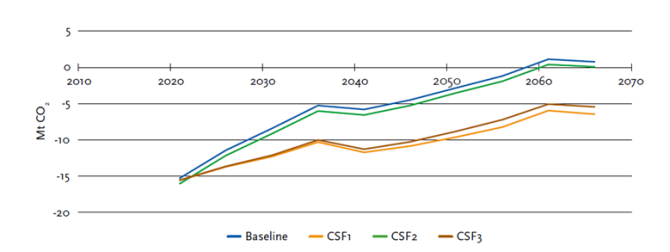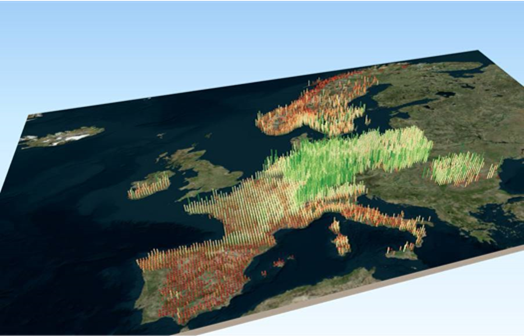
Project
European Forest Resource analysis tools
Since the Second World War European forest resources have expanded greatly, both in terms of area and timber volume. Many countries are now facing an aging forest, with high timber stocks and declining increment and carbon sinks, with a biodiversity being under pressure, while a changing climate calls for active adaptation. At the same time the public and policy makers have increasing and often conflicting expectations of what the forest should deliver in terms of e.g. wood production, biodiversity conservation, carbon sequestration and recreation.

Figure 1: Carbon balance in living biomass for the Baseline and the CSF scenarios in the Russian district Karelia (Lerink et al., 2020). Positive values are emissions and negative values are removals of CO2.

The development of EFISCEN-Space model profited from numerous national and international projects including several Framework Programmes from the European Commission as well as the Horizon 2020 grant from Netherlands' Ministry of Research.
Additional funding and co-funding of the EU-projects was received from various projects under the Knowledge Base programmes of the Dutch Ministry of Agriculture, Nature and Food Security.
Publications
-
Climate-Smart Forestry in Russia and potential climate change mitigation benefits
-
How much wood can we expect from European forests in the near future?
-
Next-generation information to support a sustainable course for European forests
-
Understanding the implications of the EU-LULUCF regulation for the wood supply from EU forests to the EU 07 Agricultural and Veterinary Sciences 0705 Forestry Sciences Georgii Alexandrov
-
Climate-Smart Forestry: mitigation implact in three European regions
-
Can European forests meet the demands of the bioeconomy in the future? Wood supply alongside environmental services
-
First sign of carbon sink saturation in European forest biomass
-
Actual European forest management by region, tree species and owner based on 714,000 re-measured trees in national forest inventories
-
Species-specific, pan-European diameter increment models based on data of 2.3 million trees
-
Alternative forest management strategies to account for climate change-induced productivity and species suitability changes in Europe
EFSOS
EFSOS II
EFSOS III